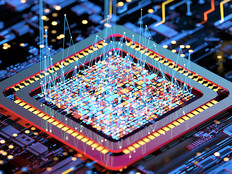More Microserver Solutions Are on the Way
Similar to HP’s Project Moonshot, IBM is developing technology that could be used in space-efficient and low-power CPU microsevers, reports Computerworld.
Although IBM didn’t say when these systems would be available, a prototype board that could be used as the basis of such a microserver has already been developed. Gaurav Chaudhry, IBM worldwide marketing manager for System x high-performance computing, said the company has not yet determined what type of workloads the microserver would be used for and is investigating target markets for such a hyperscale computing solution.
As for HP, it recently upgraded the processor in Moonshot, switching from Intel's Atom S1200 Centerton processors to the Atom Avoton line. HP rolled out its first Moonshot server earlier this year. The microserver has proved especially attractive among large service providers, who are often in need of scalable computing power.
According to HP, Moonshot is supposed to be 89 percent more energy efficient, use 80 percent less space, cost 77 percent less and be 97 percent less complex than a traditional server, such as the company’s ProLiant DL380 model. Moonshot — as would IBM’s proposed microserver — achieves the latter through the ability to cram dozens of standalone server cards (called cartridges for Moonshot) into a single rack.
Need more raw server power? Simply plug in another cartridge.
Moonshot’s high-density chassis can hold as many as 45 Intel Avoton 8-core processor cartridges, for a total of 360 cores, in a 10U rack space — a whopping 3,600 CPU cores in a full rack. By contrast, a full standard-server rack can hold about 336 cores, or 10 times less than Moonshot.
As HP partner Nth Generation Computing CIO and chief strategy officer Rich Baldwin explained to CRN, "That's phenomenal compute power," in a small amount of space. “If a company can shrink five or 10 cabinets into one, that's pretty significant.”







